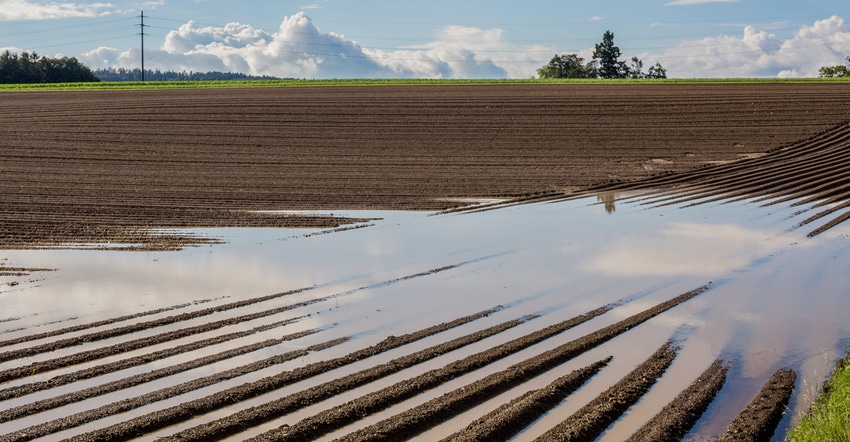June 27, 2019

Growers who opt not to plant corn or soybeans this year because of consistently wet fields would be best off not leaving those fields bare, according to an expert at Ohio State University.
A bare field is a vulnerable field, subject to losing its valuable, nutrient-rich layer of topsoil. Wind can blow the topsoil away and rain can wash it away, says Sarah Noggle, an educator with OSU Extension, the outreach arm of Ohio State’s College of Food, Agricultural and Environmental Sciences.
A field without a crop is an open invitation for weeds to take over, making it harder to prevent weeds the next time a crop is planted there, Noggle says.
Planting a cover crop such as oats, buckwheat or cereal rye to have something on the field is a wise choice, she says. In addition to helping slow soil erosion, cover crops can improve soil health.
Nationwide, more farmers are planting cover crops. The national cover crop acreage increased by 50% over the past five years, according to the 2017 Census of Agriculture.
“Cover crops can be a good way to take advantage of an otherwise unfortunate situation,” Noggle says.
This spring, many Ohio farmers are having to consider what to do with fields where they normally would have planted corn or soybeans. The wettest yearlong period in Ohio on record has left regions across the state consistently saturated, delaying or preventing growers from being able to plant in them.
Farmers across the country face obstacles to planting, because nationwide rainfall totals have also topped records.
Some Ohio farmers who typically plant corn, soybeans or both could choose not to plant either; instead, they could choose to file insurance claims so they can gain some earnings rather than risk planting in mud.
Large numbers of unplanted acres
Up to one-third of Ohio’s acres that normally have soybeans or corn growing on them could be left unplanted, says Ben Brown, manager of the CFAES Farm Management Program. Much of the unplanted acreage will be in northwest Ohio, the region of the state that has been the hardest-hit by rain this spring.
Only 68% of Ohio’s corn crop and 46% of Ohio’s soybean crop had been planted as of June 17, according to a USDA report. Typically, by now, Ohio’s corn acres have been entirely planted, and nearly all of the state’s soybean acres have been planted.
“We want to plant. That’s what we do as farmers,” Brown says. “So, it’s a ridiculously hard decision not to plant.”
If a farmer decides not to plant corn or soybeans this season, he or she will be ineligible to receive federal aid through the Market Facilitation Program. The program is aimed at helping offset farmers’ losses as a result of the recent overseas tariffs on U.S. goods, including corn and soybeans.
But farmers who plant a crop such as soybeans as a cover crop — and don’t harvest it — might still be able to collect a minimal MFP payment, Brown says. However, there’s a stipulation: The soybean cover crop has to be grown on land that had been intended to grow corn.
While there’s still time in the growing season to plant soybeans, how many acres will be planted in Ohio and across the Midwest is uncertain. Much of that hinges on the weather. Above-average rainfall is predicted for the rest of the month, and national predictionscall for July and August to be wetter than normal across much of the country.
To help select a cover crop, visit go.osu.edu/covertheland.
Source: OSU Extension, which is solely responsible for the information provided and is wholly owned by the source. Informa Business Media and all its subsidiaries are not responsible for any of the content contained in this information asset.
You May Also Like




